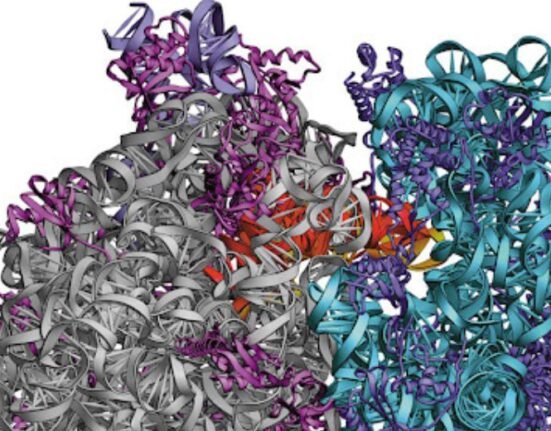HQ Team
May 24, 2025: Stanford University researchers have developed a gene-editing technology, which they hope will lead to treatments for neurological diseases as well as traumatic injuries.
The researchers used Clustered Regularly Interspaced Short Palindromic Repeats (CRISPR) technology for transporting a vital molecule to a specialised cell transmitting nerve impulses or neurons, where it can repair and regrow parts of the cell.
When a neuron in our body gets damaged, segments of ribonucleic acid (RNA) molecules produce proteins that can help repair the injury.
In neurological disorders such as amyotrophic lateral sclerosis, which affects the spinal cord, and spinal muscular atrophy, the mechanisms for moving life-essential RNA to injured sites within the cell fail.
‘Spatial RNA medicine’
As a result, RNA molecules can’t get to where they are needed, and damage becomes permanent.
The technology forms the foundation for a new class of therapeutics that the researchers are calling “spatial RNA medicine.”
“For the first time, we’ve harnessed the power of CRISPR technology to create a precise spatial ‘zip code’ that delivers RNA molecules exactly where they’re needed within cells,” said Stanley Qi, an associate professor of bioengineering and senior author of the study.
“Imagine being able to specifically target damaged sites within a neuron, repairing them, and promoting their regrowth – this is what our technology achieves.”
‘Move RNA’ to exact location
Researchers realised that the distribution of RNA within a cell, where specific molecules are located, may be just as important as what they are capable of doing. An individual neuron can be over a meter long, and ageing, injury, and mutations can all disrupt its ability to transport the tiny RNA over such a distance.
“Therapeutic RNA can’t help if it doesn’t get to where it’s needed,” Qi said. “We wanted to create a technology that could reliably move RNA to where it needs to function.”
Qi and his colleagues used a version of the gene-editing tool CRISPR, called CRISPR-Cas13, to target individual pieces of RNA — unlike the more widely known CRISPR-Cas9, which targets DNA.
CRISPR is used to slice and edit genetic code, but in this case, the researchers didn’t want to make any changes. They simply wanted to move the existing RNA to a new place within the cell.
‘Mailman’
“Cas13 naturally acts like a pair of scissors, but we engineered it to act like a mailman instead,” Qi said. “Then we can tell it to carry the RNA from one precise location to another.” Gene editing could be used in the future for new developments in altering the chemistry of DNA instead of the DNA sequence itself, Qi said.
The researchers paired Cas13 with specific localisation signals that act as addresses, instructing the Cas13 where to deliver the RNA.
Each location within the cell has its own address molecule, so the researchers can direct the RNA to various locations by adding different molecules to the cell.
Qi and his colleagues screened dozens of pieces of RNA and saw if any of them would help neurons to grow. They found several promising candidates, including one RNA molecule that increased neurite growth by as much as 50% over a 24-hour period.
Screen more RNA molecules
“We are discovering more RNA targets that could promote neurite outgrowth and regeneration,” said Mengting Han, a postdoctoral scholar in Qi’s lab and lead author on the paper.
“We’ve added a new tool to the CRISPR toolbox, using it to control RNA localisation inside the cell. This has never been achieved before and, importantly, it opens new therapeutic directions for treating neurodegenerative diseases,” she said.
The researchers are using their new tool CRISPR-TO to screen additional RNA molecules to determine which ones will be most effective at repairing injured neurons in the brains of mice, as well as in human neurons.
“We are at the beginning of understanding how the spatial organisation of RNA benefits brain repair,” Qi said. “We hope our technology will help people figure out which RNAs will be the biggest players for better therapeutics.” The findings were published in Nature.








